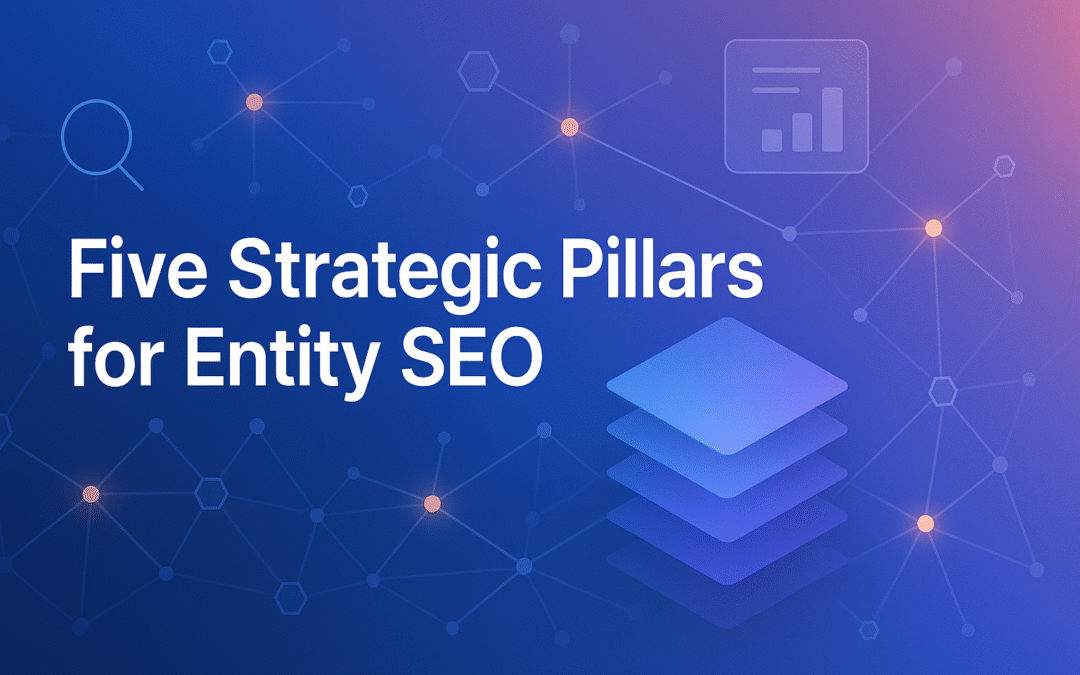Let’s be real, the Five Strategic Pillars for Entity SEO are about way more than sprinkling in a few entities or tweaking a couple of keywords. The real results come from strategy. That’s where these five pillars make all the difference, because Entity SEO isn’t just a technical checklist; it’s a mindset. It’s the kind of big-picture thinking that skilled digital marketers already use… just focused on how search engines understand your expertise, authority, and relevance.
Here’s the thing: a lot of people still treat SEO like it’s a maintenance job… check the boxes, tweak the code, move on. But anyone who’s ever built a strong campaign knows better. Real success happens when you do your research, connect with your audience across different channels, adjust when the numbers change, blend analytics with creativity, and make sure everything feels consistent. Entity optimization works the same way, it’s about thinking strategically before you start doing technically.
Traditional keyword optimization? It’s kind of like trying to bake a full cake with just one egg. You might get something out of it, but it’s not going to rise the way you want. Entity SEO, on the other hand, builds a full ecosystem… a connected framework that shows depth, authority, and consistency across every topic your audience cares about. That’s how smart brands grow: not through one-time wins, but through steady, intentional visibility that builds trust over time.
Now, let’s take a closer look at the five interconnected pillars that make all of this work. They’re not buzzwords, they’re practical steps that turn SEO from guesswork into strategy:
- Research First: Deep entity understanding
You can’t optimize what you don’t understand. Take time to research your topics, your competitors, and how both show up online. If you skip this part, you’re basically guessing instead of growing. - Multi-Touch Distribution: Strategic content allocation
Don’t pour everything into one post or one platform. Spread your content across the right mix of channels and formats so you stay visible and relevant in different spaces. - Signal Responsiveness: Behavioral data adaptation
Your audience is constantly giving you feedback; how they click, scroll, or leave a page says a lot. Pay attention to those signals and adapt quickly when something’s off. It’s about staying flexible and learning in real time. - Analytical and Creative Excellence: Technical and content quality
Balance matters. The data shows you what’s working, but creativity is what connects with people. Too much of one without the other, and your strategy will feel incomplete. - Ecosystem Construction: Interconnected topical coverage
Build relationships between your content pieces. Each topic should support and strengthen the others, forming a network that clearly demonstrates your expertise. Think of it as building an online community around your knowledge.
Each of these pillars comes straight from what experienced marketers already do every day. Once you understand how they fit together, Entity SEO stops feeling complicated and starts feeling like the natural next step in strategic marketing.
What’s Coming Next
This is just the beginning. Over the next few posts, we’ll explore each of these Five Strategic Pillars for Entity SEO in detail… what they mean, how to apply them, and how to make them work for your brand. You’ll get real-world examples, actionable insights, and some lessons most people wish they’d learned sooner.
So stay tuned and don’t let FOMO get the best of you. You’ll definitely want to come back for the full breakdown of the Strategic Pillars for Entity SEO, one pillar at a time.

